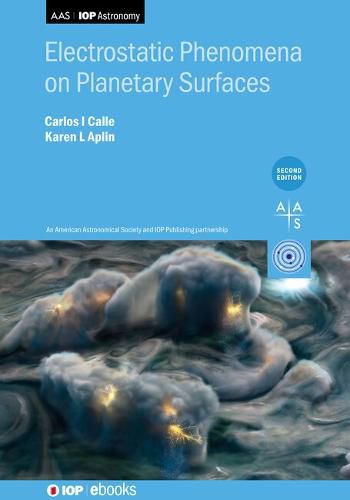Readings Newsletter
Become a Readings Member to make your shopping experience even easier.
Sign in or sign up for free!
You’re not far away from qualifying for FREE standard shipping within Australia
You’ve qualified for FREE standard shipping within Australia
The cart is loading…






This title is printed to order. This book may have been self-published. If so, we cannot guarantee the quality of the content. In the main most books will have gone through the editing process however some may not. We therefore suggest that you be aware of this before ordering this book. If in doubt check either the author or publisher’s details as we are unable to accept any returns unless they are faulty. Please contact us if you have any questions.
This book brings together the current knowledge on the diverse electrostatic phenomena encountered across the solar system. It highlights the important influence of planetary electrostatics on atmospheric composition, weather, and lightning. The planetary electrostatic environments described have enormous implications for the safety of the human and robotic exploration of the solar system.
The book starts with a brief review of the basic principles in electrostatics. It then describes the different planetary environments where electrostatic phenomena take place: the atmospheres and the planetary surfaces. Complex terrestrial electrostatic environments that are not yet completely understood are also covered.
Spacecraft and satellites interact with the space plasma environment around the Earth. This interaction generates electrostatic charging of these orbing craft, a complex phenomenon that may interfere with their operation and may disrupt or damage power, navigation, communications, and other instrumentation. With this background, the book describes the electrostatic environments of the major bodies in the solar system, concentrating on Mars, the moon, and Jupiter.
Updates in the second edition include two new chapters on Space Radiation Fundamentals and The Electrostatic Environment of Jupiter. There are also updates to many other existing chapters including updated models of the lunar electrical environment, recent measurements from NASA’s Curiosity rovers, recent discoveries of the properties of the Venusian atmosphere and new data on Mercury.
$9.00 standard shipping within Australia
FREE standard shipping within Australia for orders over $100.00
Express & International shipping calculated at checkout
This title is printed to order. This book may have been self-published. If so, we cannot guarantee the quality of the content. In the main most books will have gone through the editing process however some may not. We therefore suggest that you be aware of this before ordering this book. If in doubt check either the author or publisher’s details as we are unable to accept any returns unless they are faulty. Please contact us if you have any questions.
This book brings together the current knowledge on the diverse electrostatic phenomena encountered across the solar system. It highlights the important influence of planetary electrostatics on atmospheric composition, weather, and lightning. The planetary electrostatic environments described have enormous implications for the safety of the human and robotic exploration of the solar system.
The book starts with a brief review of the basic principles in electrostatics. It then describes the different planetary environments where electrostatic phenomena take place: the atmospheres and the planetary surfaces. Complex terrestrial electrostatic environments that are not yet completely understood are also covered.
Spacecraft and satellites interact with the space plasma environment around the Earth. This interaction generates electrostatic charging of these orbing craft, a complex phenomenon that may interfere with their operation and may disrupt or damage power, navigation, communications, and other instrumentation. With this background, the book describes the electrostatic environments of the major bodies in the solar system, concentrating on Mars, the moon, and Jupiter.
Updates in the second edition include two new chapters on Space Radiation Fundamentals and The Electrostatic Environment of Jupiter. There are also updates to many other existing chapters including updated models of the lunar electrical environment, recent measurements from NASA’s Curiosity rovers, recent discoveries of the properties of the Venusian atmosphere and new data on Mercury.